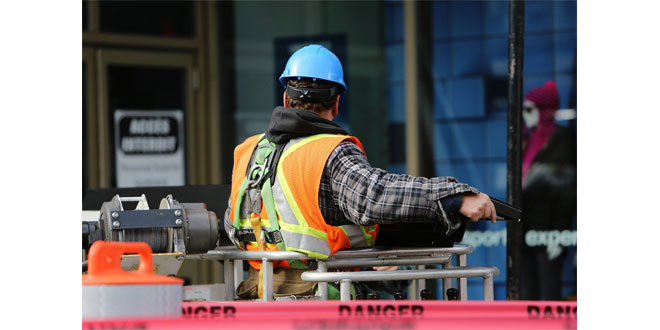
Working at height remains one of the prime areas of concern for health and safety across industry. In the UK, falls account for more workplace fatalities than any other type of accident, with 40 people tragically losing their lives that way in the year to July 2019.
It isn’t just crane operators or construction contractors working on tall buildings that face the risk of working at height. The Health and Safety Executive (HSE) defines working at height as any situation where an individual could be liable to suffer injury from a fall if suitable precautions are not in place. You don’t have to fall very far at all to be at risk of serious injury – a few metres is more than enough.
As a consequence, safety protocols around working at height have always been as important in the materials handling sector as they are in any industry. In warehousing operations, for example, moving goods to and from high shelves is part of the daily routine. Elevated storage spaces also need regular inspection and maintenance.
The HSE states that guarding against accidents for people working at height requires appropriate planning, supervision and training. It also emphasises the importance of using the right equipment.
In materials handling, the type of access equipment chosen is a critical consideration. When moving goods at height, operatives need to have two hands free, making ladders and platform steps unsuitable for any handling tasks above head height. More permanent and stable structures like scaffolds, on the other hand, even mobile towers, are impractical in most MH scenarios because of their large footprint and the time it takes to assemble and disassemble them.
For these reasons, access platforms have become especially popular in warehousing and materials handling operations. Eliminating the need for steps, mobile, easy to use and with a small footprint, mechanised access platforms provide a safe, efficient, flexible solution for working at heights of up to five metres.
Let’s take a look at some of the main types available.
Manual Lifts
Also known as non-powered lifts, the stand out example is the EcoLift range, which uses a patented ‘stored power system’ to supplement the manual lift operation. Users step into the caged platform and, using the manual lift mechanism, raise the vertical shaft to the required height.
As with all types of low-level access platform, the main benefit over ladders and scaffolds in materials handling environments is that there are no steps involved – rather than having to carry stock up and down steps to pick and load, they load the platform before it is raised or lowered, which is much safer overall. Compared to powered platforms, manual lifts are considered eco-friendly because they do not use any electricity or hydraulic oil in their system. They are also lightweight and easy to move around, but on the downside, they don’t have the load capacity of most powered solutions.
Scissor Lifts
Powered scissor lifts are a very popular option for materials handling operations because they combine a large, secure platform area with fantastic stability and high load-bearing capacity. Rather than lifting on a single arm or shaft, the ‘scissor’ mechanism sits under the platform and raises the whole unit from four contact points at the corners underneath, which provides all the strength and stability.
Compared to some lifts with vertical shafts, scissor lifts also have the benefit of condensing down to a lower profile when not in use, which is useful for storage as well as for moving around busy workspaces. For moving goods around on, off and between shelves, the size of the platform is also a bonus because it means more items can be placed on them at once. But one slight drawback is that the platform remains higher off the ground in the ‘floor’ position than other types, which could potentially make loading goods and/or climbing onto the platform trickier.
Boom Lifts
More familiar as the ‘cherry picker’-type outdoor power lifts, manufacturers like Power Tower nonetheless produce lower-level boom lift platforms which are ideal for indoor materials handling. The extra strength provided by the boom arm mechanism compared to a vertical lift means they can accommodate larger platforms and handle heavier loads, putting them on a par with scissor lifts in those regards. They also provide a higher reach than vertical lifts.
MHW Magazine
